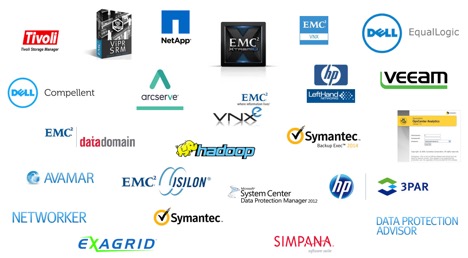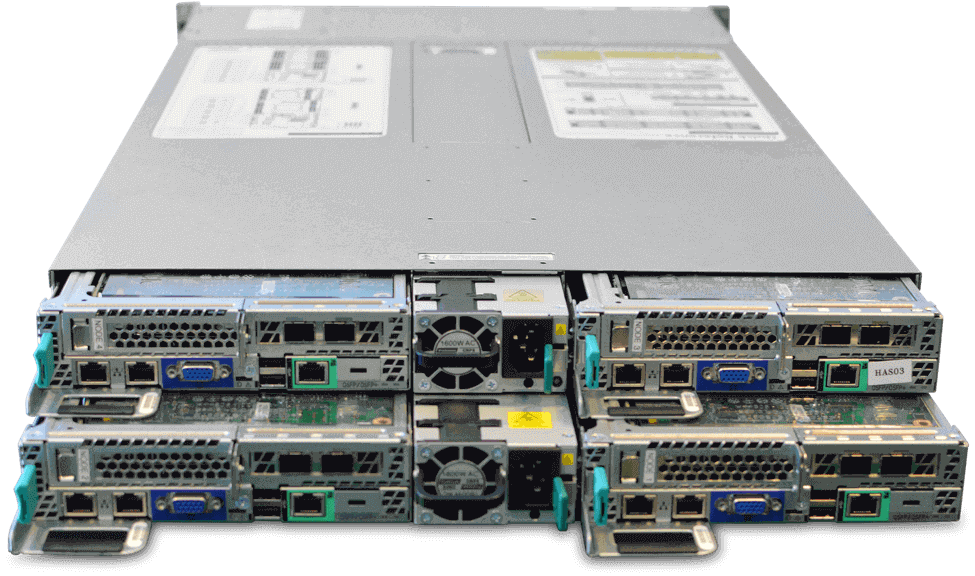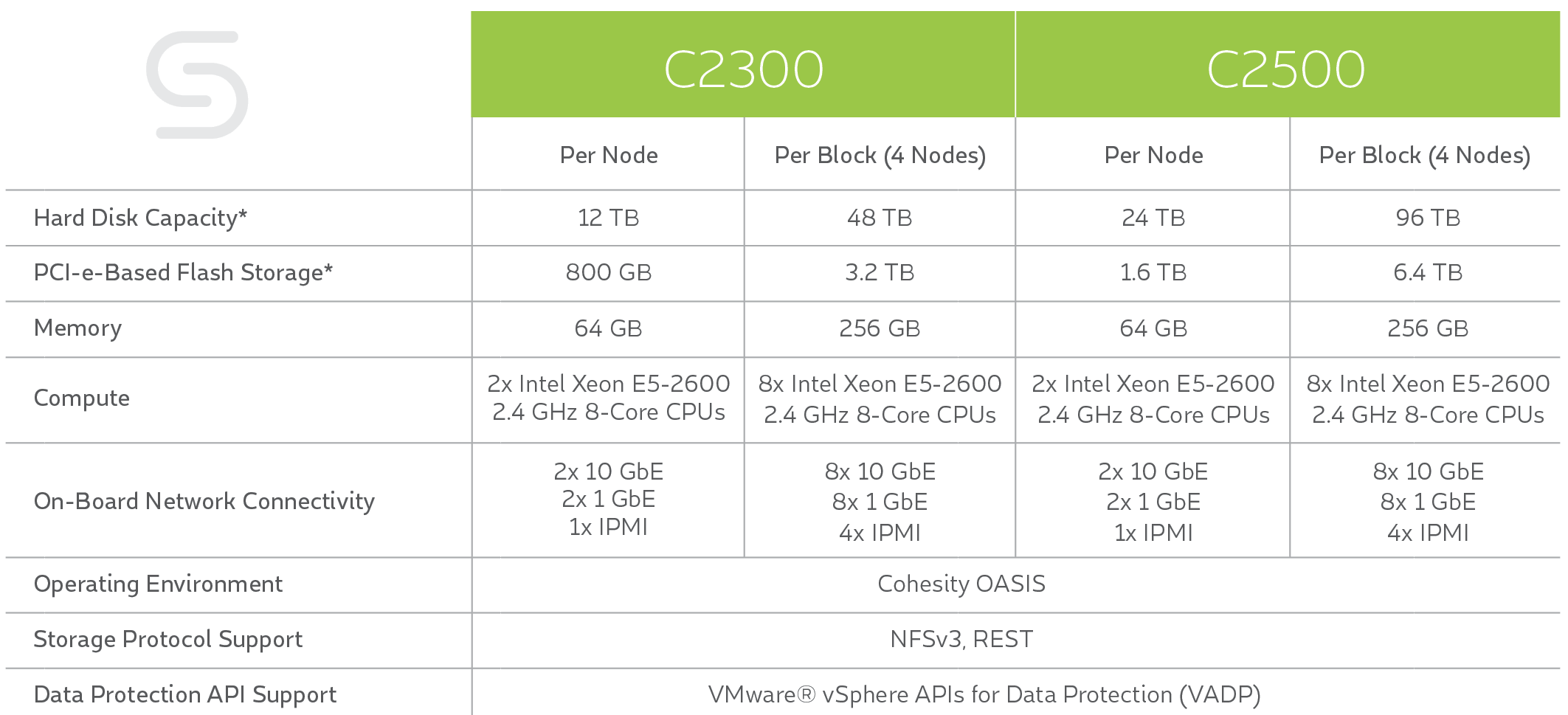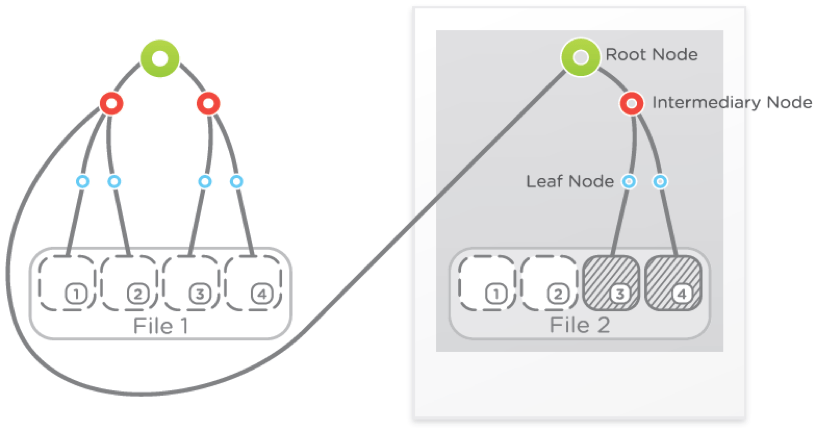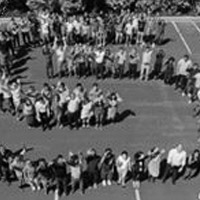Prior to joining NetApp in 2011, I spent 5 years completely gutting and overhauling the datacenter of a public healthcare company. This massive process included implementing VMware vSphere on brand new 4U/4-way servers acting as ESX hosts, implementing all-new storage solutions from NetApp to host VM’s, and data protection solutions from vRanger and Backup Exec. This was in addition to existing solutions for hosting and protecting Oracle, MSSQL, and MS Exchange. This was all on top of our existing Windows host DFS filer that was being sync’ed to multiple locations across the entire USA.
Even as far back as 2008, things were already extremely fragmented. As much as VMware helped us to consolidate servers onto a single platform, we still needed different vendors and multiple solutions to handle all of the secondary storage needs.
Secondary Storage in 2015
Fast-forward to 2015.
The incredible sprawl of the VMware ecosystem, including secondary storage and data protection solutions, has become completely unmanageable, or at-best, requires an entire team of people to manage a bunch of bolted-together solutions.
Welcome to the Revolution!
It gives me great pleasure to announce the General Availability of the Cohesity Data Platform, featuring our C2000-series hardware appliances and the all-new OASIS operating environment!
At its core, this is a brand new approach to managing multiple disparate solutions in a single platform. Let’s get into the details around the technology and what makes up this announcement.
First, the hardware. Our first delivery to market will include two options when it comes to the hardware appliance; the C2300 and the C2500.
The C2000-series appliance is a 2U chassis comprised of multiple nodes. Each node contains (2) Intel Xeon 8-core processors and 64GB of DDR4 memory. For connectivity, each node also contains (2) SFP+ 10GbE ports, (2) 1GbE ports, an IPMI port, and full KVM console connectivity.
C2500 vs. C2300
While each node also contains both hard drives and PCIe flash, this is where the C2300 and C2500 differ. In 4-node configurations, the C2500 contains 96TB (raw) of 8TB hard drives and 6.4TB of PCIe Flash. The C2300 contains 48TB (raw) of 4TB hard drives and 1.6TB PCIe Flash.
Essentially, the C2500 and C2300 are identical in hardware with the exception of the PCIe Flash and Hard Drive capacities, where the C2300 is half of the respective capacities as the C2500.
Introducing OASIS!
The Cohesity Data Platform is based on its patented Open Architecture for Scalable, Intelligent Storage (OASIS), the only operating environment that combines infinite scalability with an open architecture flexibility that can consolidate multiple business workloads on a single platform. With built-in, native applications to support data protection, copy data management, test and development, and in-place analytics, customers experience the benefits of consolidation right out of the box.
OASIS was built from the ground up to be the most robust and fully distributed system in the market. Distributed systems are inconsistent by nature: operations that are performed on a distributed system are not atomic, meaning operations could complete on some but not all nodes, resulting in data corruption. The notion of ‘Eventual Consistency’ was created to address this by stating that data written to a distributed system will eventually be the same across all of the participating nodes, but not necessarily the moment the data is written. While this tends to be fine when immediate access to that piece of data is not required, in the case of enterprise file systems, where a user can very easily write a new piece of data and then request it right back in the subsequent operation, all pieces of data need to be consistent across all participating nodes. Unlike traditional distributed file systems that are ‘Eventually Consistent,’ OASIS leverages a purpose-built noSQL store, combined with Paxos protocols, that delivers full consistency with the ability to make decisions rapidly, at massive scale, and without performance penalties.
Snapshots
Cohesity takes a different approach with it’s patented SnapTree™ technology which create a tree of pointers that limits the number of hops it takes to retrieve blocks of data, regardless of the number of snapshots that have been taken. The figure below shows how data is accessed using SnapTree.
In upcoming posts, we’ll deep-dive into each of the services of OASIS, including …
• Global Data Deduplication
• Cluster Manager
• I/O Engine
• Metadata Store
• Indexing Engine
• Integrated Data Protection
• Analytics Workbench
…and much, much more!
To keep in touch with everything going on at Cohesity, subscribe here, and follow us on Twitter, LinkedIn, and Facebook.
Related Posts:
Welcome to the Data Consolidation Era!







